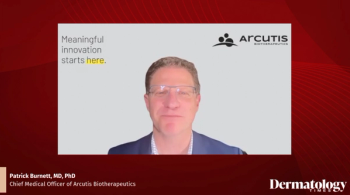
Teledermatology revolutionizing rural care
San Diego - A network of teledermatology links throughout Alaska is providing cost-effective, timely access to dermatologic care for indigenous peoples in the nation's most underserved and sprawling state, its designer reports.
San Diego - A network of teledermatology links throughout Alaska is providing cost-effective, timely access to dermatologic care for indigenous peoples in the nation's most underserved and sprawling state, its designer reports.
The ATHS is a large umbrella organization that serves the native population of rural Alaska by overseeing the ANMC, along with the Alaska Federal Health Care Access Network (AFHCAN) and the family practice-oriented Southcentral Foundation.
Since the statewide system debuted in 2002, it has facilitated close to 1,500 teledermatology consultations, he says. In this regard, Dr. Bocachica says Alaska presents a somewhat unique challenge: Two-thirds of its population lives in rural locations where very few medical specialists desire to live or practice. According to the American Academy of Dermatology (AAD), the state includes just eight dermatologists serving a total population of nearly 630,000.
In such settings, he says, "The largest savings that telemedicine offers are in travel costs."
Preliminary AFHCAN data reveals that because of the availability of telemedicine, patients and their families don't have to travel 37 percent of the time. Dr. Bocachica says that prior to using teledermatology, one of his patients was paying $1,200 round-trip - the same amount it costs to fly to Cape Town, South Africa, and back - to visit his Anchorage office.
"By using telemedicine," he says, "I can receive a high-resolution image of her provided by her physician. I can look at that, render an accurate diagnosis and send it back to him with my recommendations."
In other cases, providers, including physician assistants, nurse practitioners and community health aides trained by the ANMC, snap and send the images, Dr. Bocachica adds.
"Community health aides receive a specific amount of training that allows them to recognize basic conditions, and what requires further care versus what does not," always working under the auspices of a provider with more training, he says.
Providers simply take patients to their clinic's telemedicine cart, which includes a floppy disk-equipped digital camera that the ANMC has trained them to operate. After taking patient photos, providers load them into the telemedicine cart. From there, they're uploaded into a teledermatology server. The server sends images to Dr. Bocachica's computer, where the system's teledermatology software has been loaded.
As opposed to real-time teledermatology consultations, the Alaskan system uses only store-and-forward techniques whereby Dr. Bocachica downloads and processes images during a designated 60- or 90-minute period daily.
By eliminating the need for a receptionist, nurse and waiting room, he says, "I can probably do about four times as many telemedicine consultations within the same time frame it takes me to see one live patient."
Compared to live interaction, he adds, "Store-and-forward appears to be much more cost-effective because the specialist, the provider generating the consult and the patient don't need to be present simultaneously."
Dr. Bocachica says that psoriasis, eczema, viral exanthems, acne and contact dermatitis represent the most common skin problems he sees through telemedicine.
"We have a significant number of methicillin-resistant Staphylococcus aureus (MRSA) infections of the skin," he adds, and occasional cases of lupus, skin signs of rheumatoid arthritis and tumors such as cysts and malignancies.
Newsletter
Like what you’re reading? Subscribe to Dermatology Times for weekly updates on therapies, innovations, and real-world practice tips.

















